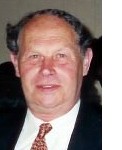The International Jewish Labor Bund After 1945 by Charles Slucki; Rutgers University Press 2012
By Garry Fabian

MELBOURNE, Australia – An academic based here, Charles Slucki, notes in his recent book that the Jewish Labor Bund was one of the major political forces in early 20th Century Eastern Europe.
But the decades after the Second World War were years of enormous difficulty for the Bundists. Like millions of other European Jews, they faced the challenge of resurrecting their lives, so gravely disrupted by the Holocaust.
Not only had the organization lost many members, but its adherents were also scattered across many continents. The book charts the efforts of the surviving remnants of the movement to salvage something from the wreckage.
Covering both the Bundists who remained in communist Eastern Europe and those who emigrated to the “west,” principally the United States, France, Australia and Israel, the book explores the common challenges they faced in building trans-national networks of friends, family and fellow Holocaust survivors, while rebuilding the once local movement under a global umbrella.
The Bund initially formed in the late 19th Century in Russia, built around promoting socialism and based very strongly on Yiddish language and culture, with its members strongly supporting the 1905 rebellion. When the uprising was brutally put down and its participants persecuted, the Bund re-established itself in the very large Polish community, where it prospered and became one of the major socialist forces.
It advocated its ideals based on Yiddish language and culture to build a society with a strong underpinning of socialism and equality for all in the environment they lived in – Poland. Its other hallmark was that its members were strongly anti-Zionist and were opposed to the idea of a Jewish state – Israel.
When WW2 broke out, Poland was invaded, and with the ensuing destruction of Polish Jewry in the Holocaust, it had a catastrophic impact on the Bund and the majority of its followers.
Slucki’s book explores how surviving Bundists tried to integrate with the different societies its members found themselves living in, which were quite different to the conditions of the very large pre-war Jewish population in Poland, the heartland of the Bund.
Another challenge was to come to terms of the establishment of Israel in 1948, and the growing support for Zionism throughout the Jewish world, which was that the Bund regarded as totally opposite to their concept of building strong Jewish community in their country where they lived as part of the wider population.
France had been a strong centre of the Bund since the 1920s when there was a strong pattern of immigration from Poland, and had a considerable structure in place. In the United States it had also established a solid base, but this progressively downgraded as the former immigrant community became more integrated into general society. As living standards rose, the adherence to socialism, the bedrock of the politics of the Bund, wavered. There was definite movement away from this political base.
The one place where the Bund flourished longer than in most countries was in Australia, with particular focus on Melbourne. Many Jewish immigrants from Poland had come to Australia in the 192s0, and a very strong Yiddish culture flourished, with theatre, cultural groups and the very active Yiddish schools. There was also a very active youth movement SKIF. After 1945, a strong influx of Holocaust survivors, many from Poland, continued to strengthen the Bund in Australia.
While its stands of opposing Zionism and the establishment of the State of Israel led to hostility from the mainstream of the Australian Jewish community, many of the Bund members nevertheless became active in Jewish communal life, serving on the boards of communal and welfare organisations.
Over time their opposition to Israel as a Zionist state changed. As they come to accept the reality of a Jewish state, they, in turn, became more accepted in the community.
Bundist grappled with the question of whether their movement could be anything other than a Polish Jewish political movement, bound to a particular time and space. To adapt, its members remained faithful to their principles, which called on Bundists to foster Jewish life wherever they lived, be it in smaller or larger Jewish communities. This however meant that the Bund could not survive as a singular, united entity as it had before.
In Russia and Poland it had maintained a mostly solid front. For many Jewish workers the Bund provided a sense of hope that they would escape from the Ghetto and build a just world. It gave them a family, a social milieu. Many grew up in youth movements, were educated in reading circles, played for its sports clubs, participated in self-organised defense groups and benefited directly from its union activism.
While for 70 years since 1945, the Bund has survived in some parts of the world, inevitably it has lost its position as a major Jewish force. As new generations become more aspirational, the socialist concept has faded. While some families still adhere to Yiddish as their cultural language, and Yiddish schools are still active to teach children the “Mamme Loshen”, the Bund is rapidly reaching it late twilight years.
The book lays out the story of the Bund after 1945 in depth, and will provide interesting reading of a movement that represents a very important chapter of the Jewish way of life.
*
Garry Fabian is bureau chief in Australia for San Diego Jewish World. He may be contacted via garry.fabian@sdjewishworld.com